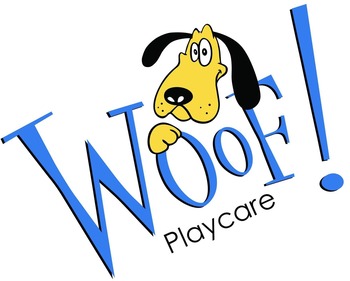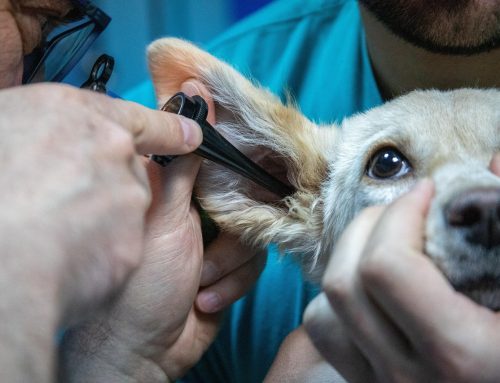
Neosporin is generally safe for dogs when used in small amounts on minor cuts and scrapes. It can help prevent infection and speed up healing. Keep in mind that dogs tend to lick their wounds, and swallowing Neosporin can cause stomach upset or other issues. It’s important to use only a small amount and keep an eye on your dog to make sure they don’t lick it off. For deep wounds, allergic reactions, or if your dog ingests a large amount, you should contact a veterinarian for advice.
Some of The Benefits of Using Neosporin on Dogs
Neosporin can be helpful for treating minor cuts, scrapes, and wounds on dogs. It contains antibiotics that help prevent infections and promote faster healing. The ointment also provides a protective barrier, keeping bacteria and dirt out of the wound. In some cases, Neosporin can help reduce redness and swelling, making your dog more comfortable. Remember that it should only be used in small amounts and under supervision to prevent your dog from licking it off.
Is There a Specific Neosporin for Dogs?
There is no Neosporin made specifically for dogs, but the regular version can be used in small amounts on minor wounds. Some pet stores and veterinarians offer antibiotic ointments designed specifically for dogs, which may be a safer option. These products are made without certain ingredients that could be harmful if licked or swallowed. While regular Neosporin is generally safe, it’s best to check with a vet before using it on your pet. If your dog has a serious wound or an infection, a veterinarian can recommend the best treatment.
The Best Way to Take Care of a Dog’s Wound
Taking care of a dog’s wound properly can help prevent infection and speed up healing. To start you’ll want to gently clean the wound with warm water and mild soap or a pet-safe antiseptic. What you’ll want to do next is pat it dry and apply a small amount of antibiotic ointment, like Neosporin, if recommended by a vet. To keep your dog from licking the wound, you may need to use a bandage or an Elizabethan collar. It’s important to check the wound daily for signs of infection, such as redness, swelling, or pus, and contact a veterinarian if it doesn’t improve.

Do Dog Boarding Facilities Use Neosporin on Dogs’ Wounds?
Dog boarding facilities may provide basic first aid for minor wounds, but most will not use Neosporin or other medications without the owner’s permission. What they typically do is clean the wound and monitor it for signs of infection. If a dog has a more serious injury, the facility will usually contact the owner and seek veterinary care. Some boarding facilities have policies that require a vet’s approval before applying any medication, including Neosporin. It’s always a good idea to ask about a facility’s first-aid procedures before boarding your dog.
The Proper Way to Apply Neosporin to a Dog’s Wound
To safely apply Neosporin to a dog’s wound, start by gently cleaning the area with warm water and mild soap or a pet-safe antiseptic. Pat the wound dry with a clean cloth to remove any moisture. You’ll then want to apply a thin layer of Neosporin to the wound, being careful not to use too much. Avoid covering the wound with a bandage unless advised by a veterinarian, as airflow helps with healing. Watch your dog closely to prevent licking, and if irritation or an allergic reaction occurs, stop using the ointment and contact a vet.
Potential Risks of Using Neosporin on a Dog
While Neosporin can help with minor wounds, there are some risks to consider when using it on dogs. One concern is that dogs often lick their wounds, which can cause them to ingest the ointment and lead to stomach upset or diarrhea. Some dogs may also have an allergic reaction, resulting in redness, swelling, or itching. Using Neosporin on deep wounds or serious infections may also delay proper treatment from a veterinarian. To keep your dog safe, always use Neosporin in small amounts, monitor for any negative reactions, and consult a vet if you’re unsure.
Best Alternative to Neosporin for Dogs
If you’re looking for a safer alternative to Neosporin for your dog, there are several pet-friendly options available. Veterinarian-recommended antibiotic ointments, such as those made specifically for pets, are a great choice because they don’t contain ingredients that could be harmful if licked. Products like Vetericyn Plus or natural remedies like coconut oil and aloe vera can also help soothe minor wounds and prevent infection. Cleaning the wound with warm water and a pet-safe antiseptic is often enough to promote healing without the need for antibiotics. Always check with a veterinarian before using any new product to ensure it is safe for your dog.
Side Effects of Using Neosporin on a Dog
While Neosporin is generally safe for minor cuts, it can cause side effects in some dogs. One common issue is stomach upset if the dog licks and swallows the ointment, leading to vomiting or diarrhea. Some dogs may also have an allergic reaction, which can cause redness, swelling, itching, or irritation around the wound. In rare cases, certain ingredients in Neosporin may be toxic if ingested in large amounts.
To prevent side effects, use only a small amount, monitor your dog closely, and contact a veterinarian if any unusual symptoms appear.

When to Use Neosporin on a Dog
Neosporin can be used on a dog for small cuts, scrapes, or minor skin irritations to help prevent infection and promote healing. It is best for surface-level wounds that are not deep, bleeding heavily, or showing signs of infection. If your dog has a small scratch or abrasion, you can apply a thin layer after cleaning the area with warm water and a pet-safe antiseptic. Keep in mind that if the wound is serious, swollen, or not healing properly, you should seek veterinary care instead of using Neosporin. Always monitor your dog to ensure they don’t lick the ointment, as swallowing it may cause stomach issues.
Can You Put Neosporin on a Dog’s Ear?
You can apply Neosporin to a dog’s outer ear for minor cuts or scrapes, but it should not be used inside the ear canal. Neosporin can help prevent infection and promote healing on the outer ear, but if the ear is irritated, infected, or if there is a wound inside the ear, it’s best to consult a veterinarian. Applying Neosporin inside the ear can cause irritation or disrupt the ear’s natural balance. Always make sure your dog doesn’t lick or scratch the ointment off, as swallowing it can cause stomach issues. If the ear condition doesn’t improve or worsens, it’s important to get professional care.
Ingredients in Neosporin That Are Harmful to Dogs
Neosporin contains several ingredients that can be harmful to dogs if ingested or overused. One of the main ingredients is neomycin which can cause an allergic reaction or irritation in some dogs. Bacitracin and polymyxin B, the other antibiotics in Neosporin, are generally safe when applied topically, but if ingested, they can lead to digestive issues like vomiting or diarrhea. Some dogs may also be sensitive to the petroleum jelly base of the ointment, which could cause skin irritation or an upset stomach. It’s important to keep Neosporin away from the dog’s mouth and monitor for any side effects when using it on minor wounds. Always consult a veterinarian before using Neosporin on your pet.
Amount and Frequency of Neosporin Usage on Dogs
When using Neosporin on dogs, it’s important to apply only a small amount to the affected area. A thin layer is usually enough to cover a minor cut or scrape. Neosporin can typically be applied 1 to 3 times a day, depending on the size and severity of the wound. Be sure to clean the area with water or a pet-safe antiseptic before each application to prevent infection. It’s important to remember that if the wound doesn’t improve, becomes worse, or shows signs of infection, it’s best to stop using Neosporin and consult a veterinarian for further care. Always monitor your dog to ensure they don’t lick the ointment off, as swallowing it may cause stomach issues.
Do You Have to Get Permission from a Veterinarian to Use Neosporin on a Dog?
In most cases, you do not need permission from a veterinarian to use Neosporin on a dog for minor cuts or scrapes. Neosporin is generally safe for treating small, surface wounds, as long as it is used in moderation. Always remember that if your dog has a more serious injury, an infection, or a wound that isn’t healing, it’s best to consult a veterinarian before applying any ointment. Some dogs may be allergic to certain ingredients in Neosporin, so getting advice from a vet can help avoid complications. If your dog has a pre-existing condition or if the wound is near the eyes or inside the ears, it’s important to also ask a vet for guidance before using Neosporin.
Using Neosporin on Dog’s Hot Spots
Neosporin is not recommended for treating a dog’s hot spots, as it may not effectively address the underlying causes of the condition. Hot spots are usually caused by allergies, infections, or excessive licking and scratching, and Neosporin may not be strong enough to treat these issues. Instead, it’s better to clean the area with a pet-safe antiseptic and then consult a veterinarian for proper treatment, which may include topical antibiotics or anti-inflammatory medications. If Neosporin is used on hot spots, it should be applied sparingly, and you should monitor your dog closely to make sure they don’t lick it off. Using Neosporin on hot spots without addressing the cause of the irritation could also result in further discomfort or worsening of the condition.
What Neosporin is Used for on Dogs
Neosporin is commonly used on dogs to treat minor cuts, scrapes, and surface-level wounds. The antibiotic ointment helps prevent infection by killing bacteria and promoting healing. It can be applied to small, non-serious injuries after cleaning the area with water or a mild antiseptic. Neosporin can also help soothe the skin and reduce the risk of complications from minor wounds. Always remember that it should not be used for deeper wounds, serious infections, or conditions like hot spots, and you should always consult a veterinarian if you’re unsure about its use.
What You Should Not Use Neosporin For on a Dog
Neosporin should not be used on dogs for deep or large wounds, as it may not be strong enough to prevent infection or promote proper healing. It is also not recommended for use on hot spots, as these require specific treatment for underlying causes like allergies or infections. Avoid using Neosporin on wounds near the eyes, ears, or mouth, as these areas are sensitive and may react poorly to the ointment. Neosporin should also not be used if your dog has an allergy to any of its ingredients, which can cause irritation or an adverse reaction. If your dog’s injury does not improve or worsens, you should consult a veterinarian for proper care.
Properly Caring for a Dog’s Wound
Properly caring for a dog’s wound helps to prevent infection and ensure the healing process goes smoothly. If a wound is left untreated, bacteria can enter and cause an infection, which could lead to more serious health problems. Cleaning the wound properly and applying ointments like Neosporin can help protect the area and speed up healing. Monitoring the wound for signs of complications, such as redness or swelling, also allows you to catch any issues early and prevent them from getting worse. By taking the time to care for your dog’s wound properly, you can help them recover faster and reduce the risk of future problems.






